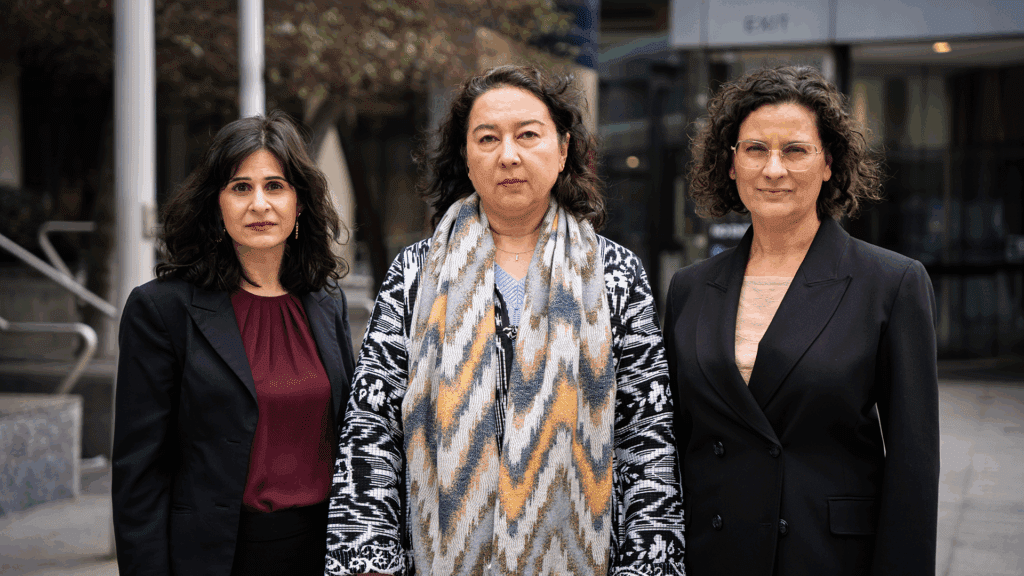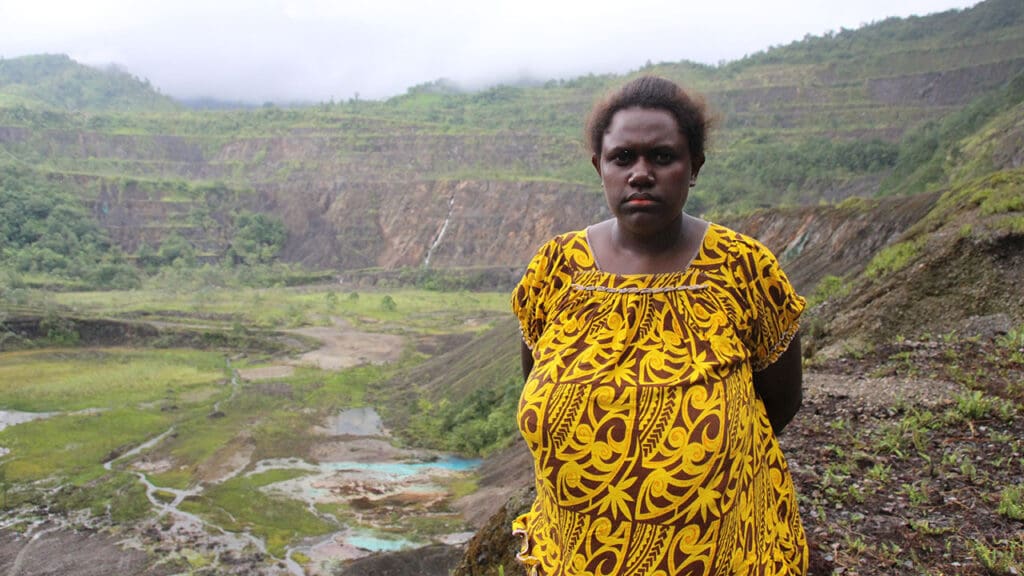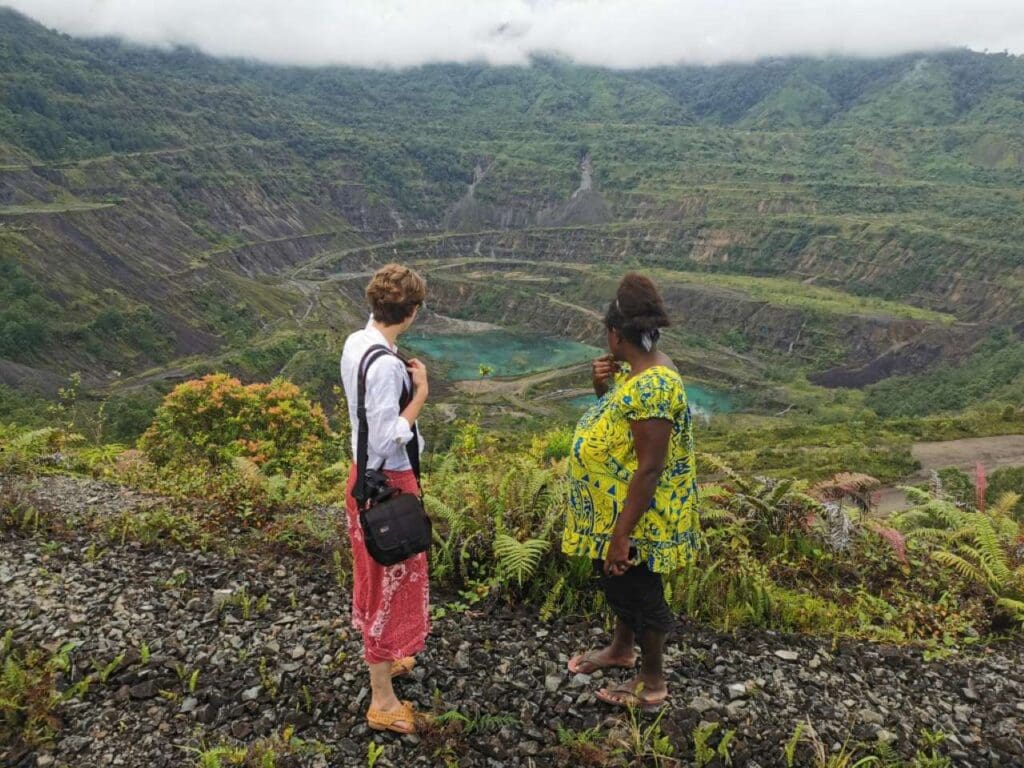Rio Tinto to face scrutiny at AGM for response to Panguna mine disaster
As shareholders meet in Perth today for Rio Tinto’s AGM, communities living with the ongoing devastation from Rio Tinto’s former Panguna mine are calling for the company to urgently commit to funding long-term solutions.
Rio Tinto will be asked why it has not yet committed to clean up and remediation following the release last year of an independent investigation into the mine, which found extensive pollution, mine-related flooding and collapsing infrastructure pose life-threatening risks to local people.
In November 2024, the company announced that it had formed a Roundtable with the Bougainville Government and its former subsidiary, BCL, to discuss ways forward, including the development of a potential remedy mechanism.
While leaders from the affected communities have welcomed these discussions, they have expressed concern about their exclusion from the talks and have criticised the slow pace of progress to address life-threatening risks posed by the mine, some of which were identified as early as August 2022.
Rio Tinto will also face questions at the AGM from other communities impacted by its operations, including a delegation of leaders representing the Robe River Kuruma people of the Pilbara about failures to satisfactorily address just compensation for mining on their land, ongoing environmental impacts and the inadequate response to cultural heritage destruction.
Theonila Roka Matbob, Landowner and Member of Parliament for the Ioro constituency where the Panguna mine is located, said:
“We live with the impacts of the Panguna mine every day. We worry about levees collapsing and killing people, about villages being flooded with mine waste, about tailings dust in our houses and about our kids getting sick.
“Our people have welcomed Rio Tinto’s commitment to this process. But the company needs to now come out clearly and demonstrate that it is fully committed to addressing this disastrous legacy and to working respectfully with local community leaders on long-term solutions.
“This entire process came about because of action taken by the communities themselves to raise our voices and bring Rio Tinto back to the table after many years of inaction.
“The impact assessment confirmed the stories and experiences of our people. Our communities know the solutions that we need so that our children and grandchildren can grow strong and healthy on our land. We must have a seat at the table in any discussions about next steps.”
Keren Adams, Legal Director at the Human Rights Law Centre said:
“Rio Tinto has been on notice about the dangerous situation posed by the Panguna mine for years but has not moved nearly fast enough to address serious risks to local people or worsening impacts on their environment and livelihoods.
“We welcome the company’s recent statements about a potential remedy framework, but local people cannot afford to wait years more for solutions. They need certainty that the company is now committed to addressing the serious impacts they are living with and swift action to put this into practice on the ground.
“Community leaders from the mine-affected areas are best-placed to advise on the solutions their communities need. Their expertise must inform the way forward and they must be directly involved in any discussions about remediation.
“The Human Rights Law Centre will continue working with communities to ensure they can live on their land safely again, and that Rio Tinto takes responsibility for its legacy.”
Background
Panguna was previously one of the world’s largest copper and gold mines. During its operation from 1972 to 1989, over a billion tonnes of mine was was released directly into the Jaba and Kawerong rivers. In 1989, an uprising by local people against this environmental destruction and inequities in the distribution of the mine’s profits forced the mine to stop operating and triggered a brutal decade-long civil war.
No clean up has ever been unertaken of the site. Rio Tinto remained the majority owner of the mine until 2016, when it divested and passed its shares to the PNG and Bougainville governments, walking away from the disastrous environmental legacy and its impacts on local people.
Rio Tinto agreed to fund the Panguna Mine Legacy Impact Assessment in 2021 in response to a human rights complaint brought by local communities, represented by the Human Rights Law Centre. It is the largest study of its kind ever undertaken in Bougainville.
Phase 1 of the Impact Assessment, published in December 2024, confirmed extensive impacts and risks for local people are being caused by the abandoned mine, including:
- imminent, life-threatening risks posed by the collapsing mine pit, levees and infrastructure;
- ongoing contamination of the Jaba-Kawerong river and migration of waste into new areas;
- mine-related flooding, making river-crossings to access basic services life-threatening and affecting peoples’ access to drinking water, food gardens and sacred sites; and
- toxic chemicals stored in some locations and found in the soil in some areas.
Media Enquiries
Chandi Bates
Media and Communications Manager

Australian Uyghurs file legal action to determine whether Kmart engaged in misleading conduct about use of forced labour in its supply chains
Australian Uyghurs are taking retail giant Kmart to court seeking documents to determine whether Kmart engaged in misleading and deceptive conduct about the use of Uyghur forced labour by some of its clothing suppliers.
Read more
Bougainville community leaders demand seat at the table in remediation discussions with Rio Tinto
Bougainville community leaders are calling for a seat at the table in discussions about the potential remediation of the environmental devastation caused by Rio Tinto’s former Panguna mine, scheduled to begin in Port Moresby today.
Read more
Major environmental damage and human rights impacts to Bougainville communities confirmed by independent investigation into Rio Tinto’s former Panguna mine
Communities living with the ongoing devastation from Rio Tinto’s former Panguna mine in Bougainville are calling on the company to commit to funding remediation and addressing public safety risks, after a major independent investigation funded by the company confirmed life-threatening, ongoing social, environmental and human rights impacts from the mine.
Read more



